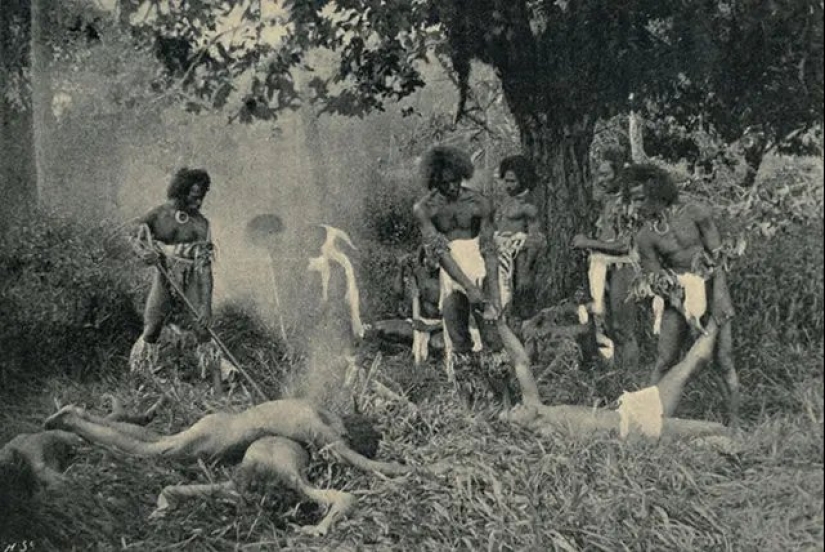The story of the leader Udre Udre — the most voracious cannibal in history
Such a terrible phenomenon as cannibalism was widespread throughout the planet in ancient times. Pagan religions contributed to this, as they taught that eating the enemy's body allows you to take away his strength and mind. With the advent of modern religions, anthropophagy began to be treated as a crime and a terrible sin. Therefore, eating their own kind has already become a rarity in the Middle Ages. But in some regions of the planet, not too affected by civilization, cannibalism flourished relatively recently. One example of this is the story of the Fijian leader Ratu Udre Udre, who lived in the 19th century.

About Ratu Udre Udre, the leader of Rakiraki in the northern part of the largest island of the Pacific archipelago of Fiji Viti Levu, very little is known. He was a typical despot of the local scale, a lover of women and military campaigns. History has not preserved for posterity the main milestones of his life and it is only known that he died around 1840.

There are several photos of this ruler taken by missionaries and travelers. A ferocious savage with a haughty face and a full head of hair looks at us from them. Appearance in this case is not deceptive. It is known that during frequent military campaigns, the leader demanded from his soldiers to give him the bodies of the strongest and most experienced enemies. Of course, he did not do this in order to bury them with military honors.

Udre Udre ate human meat and knew a lot about it. The world learned about the leader's terrible addiction a few years after his death. In 1849, Christian missionary Richard Leath visited the grave of the ruler of Rakiraki. He drew attention to the large number of stones stacked in rows around the burial. They were of different sizes, but their clearly folded with some intent.

The priest counted 872 stones, and noticed that there were more of them before. Obviously, some shameless locals took them for their needs, leaving gaps in the ranks. Lith found the chief's son Ravata and asked him about these boulders. The missionary wrote down the answer with a trembling hand in his diary:

Richard Leath noted that Ravatu was very willing to talk about his gourmet father and was very proud of him. He told the interlocutor disgusting details from the life of a cannibal. It turns out that Udre Udre basically did not eat any meat except human flesh. Since there were breaks in wars with other tribes, he made a supply of food. To do this, he smoked the meat cut from the bodies and put it in a box.

Counting the stones at the grave of the leader and the empty places, Richard Leath concluded that during his life the ogre ate from 872 to 999 people. Information about The missionary described Udre Udre in his report, which he sent to London. This document gave an occasion later to bring the chief from the island of Fiji into The Guinness Book of Records, as the most "productive" cannibal in history.

Many are dissatisfied with this, as they believe that Lit has become a victim of legends and gossip of the aborigines. But their opponents are sure that the missionary would not write fairy tales in the report. For decades of service in the most dangerous regions of the planet, this priest has never been convicted of lies or stupidity.

The grave of Ratu Udre Udre can still be seen in the north of the island of Viti Levu, near the Kings Road. Now it is crowned by a monumental tombstone, similar to a sarcophagus. It was built already in the 20th century, when tourists flooded into the province of Rakiraki. The stones symbolizing the eaten enemies are still in place. They were neatly stacked around the monument.

Local residents will be happy to show exotic lovers the place where the village of the bloodthirsty leader was located. Several stone walls, mounds on the site of huts and a lovo — a traditional underground furnace remained from it. It is said that it was in it that Udre Udre personally prepared his meals. Fijians themselves rarely approach the ruins, preferring to conduct an excursion from afar. They believe that the spirit of the formidable leader still hovers near his residence and can punish impudent visitors.
Yes, there are still cute corners on the planet where a gawking traveler may well get into the cauldron.
Recent articles

Gloria Ramirez can be considered a very ordinary American. Her life was quite happy and unremarkable. Everything changed when she ...

John Poppleton is a photographer and artist who knows what beauty is firsthand. He creates it himself. Specializes mainly in ...

Today, the white flag is perceived as a sign of surrender or a request for negotiations. But when and why did a simple white cloth ...